Harappan Gallery
Fascinating artifacts from the ancient Indus Valley Civilization including the famous Dancing Girl bronze and pottery from 2500 BCE
Read More
The National Museum in New Delhi is one of India’s most prestigious cultural institutions, offering an extraordinary window into the country’s artistic and historical evolution. Established in 1949, the museum houses over 200,000 artifacts that span more than 5,000 years of Indian civilization. Its vast collections include rare sculptures, ancient manuscripts, decorative arts, textiles, tribal masks, weapons, and archaeological treasures from the Indus Valley to the Mughal and colonial eras. Highlights include the Dancing Girl of Mohenjo-daro, Buddhist relics from Gandhara, and intricate miniature paintings. Each gallery immerses visitors in a different chapter of India's past, offering insights into diverse religions, dynasties, and regional cultures. Educational programs, temporary exhibitions, and audio guides enrich the visitor experience. Located on Janpath, the National Museum is a must-visit destination for history buffs, art lovers, and anyone interested in India’s magnificent heritage.



Fascinating artifacts from the ancient Indus Valley Civilization including the famous Dancing Girl bronze and pottery from 2500 BCE
Read More
Exquisite sculptures and artworks tracing Buddhism's evolution across Asia, featuring the sacred relics of Gautama Buddha.
Read More
Delicate and intricate artworks from various Indian schools including Mughal, Rajasthani, Pahari, and Deccan traditions.
Read More
Impressive collection of ornate weapons and protective gear from different periods and regions of Indian history.
Read More
Rare silk paintings, sculptures, and manuscripts from expeditions along the ancient Silk Route.
Read More
Comprehensive numismatic collection tracing the economic and political history of the subcontinent from ancient times to the modern era
Read MoreAt the National Museum in Delhi, visitors can engage in a wide range of enriching activities. Join guided tours available in multiple languages to gain expert insight into India’s vast cultural history. Explore rotating special exhibitions and attend cultural programs, including music, dance, and art events. Delve deeper through scholarly lectures and hands-on workshops. Use audio guides for self-paced learning and visit the museum shop for art books, souvenirs, and handcrafted replicas. The museum’s digital interactive displays make exhibits more immersive, while the on-site library offers resources for students and researchers interested in India’s heritage.

The Museum Shop at the National Museum offers a curated selection of high-quality replicas, art books, postcards, and culturally inspired souvenirs, making it an excellent place to take home a piece of Indian heritage. Just outside, Janpath Market invites visitors with colorful handicrafts, textiles, and jewelry from across India. For government-certified traditional crafts, the Central Cottage Industries Emporium is nearby. Those seeking upscale shopping experiences can explore Khan Market and Connaught Place, which feature premium Indian goods and international brands.
The area around the National Museum in New Delhi offers diverse dining options to suit all tastes. Just a short walk away, Khan Market and Connaught Place feature popular restaurants, cafés, and bars serving Indian and international cuisines. Enjoy fine dining at places like The Imperial’s restaurants or casual bites at Big Chill and SodaBottleOpenerWala. While the museum closes by evening, the surrounding areas remain lively with safe nightlife options, including rooftop lounges and well-lit, popular eateries.
The National Museum is easily reachable and safe for visitors. It sits near the Patel Chowk and Udyog Bhawan Metro stations (Yellow and Blue Lines), both just a short walk or auto‑rickshaw ride away. Numerous buses, taxis, and app‑based cabs also serve the area. Ample parking is available for private vehicles and two‑wheelers. The museum and surrounding precinct are well-patrolled and well‑lit, especially during operating hours. Visitors should watch their belongings, be cautious with pickpockets in crowded areas like Janpath, and plan reliable transport for early morning or late evening visits.


